A “man-eater” is an animal that regularly attacks and devours humans. This does not include consuming a human that the animal has killed due to feeling threatened or attacked first, scavenging from a deceased person, or attacking a person out of intense hunger. However, the last two of these scenarios may condition an animal to become accustomed to eating human flesh or attacking people, which could promote the evolution of man-eating behavior.
Man-eaters are creatures who actively seek out and kill humans for food. Most reported cases of man-eating animals involve either lions, tigers, leopards, polar bears, or enormous crocodiles. However, they aren’t the only predators that will attack humans if they have the chance. Bears, Komodo dragons, spotted and striped hyenas, and other animals have all been documented as preferring the taste of human flesh. In this article, we will dive deeper into 15 animals known to opportunistically eat humans. They will fall into the categories of cats, dogs, bears, reptiles, and even fish!
1. Tigers
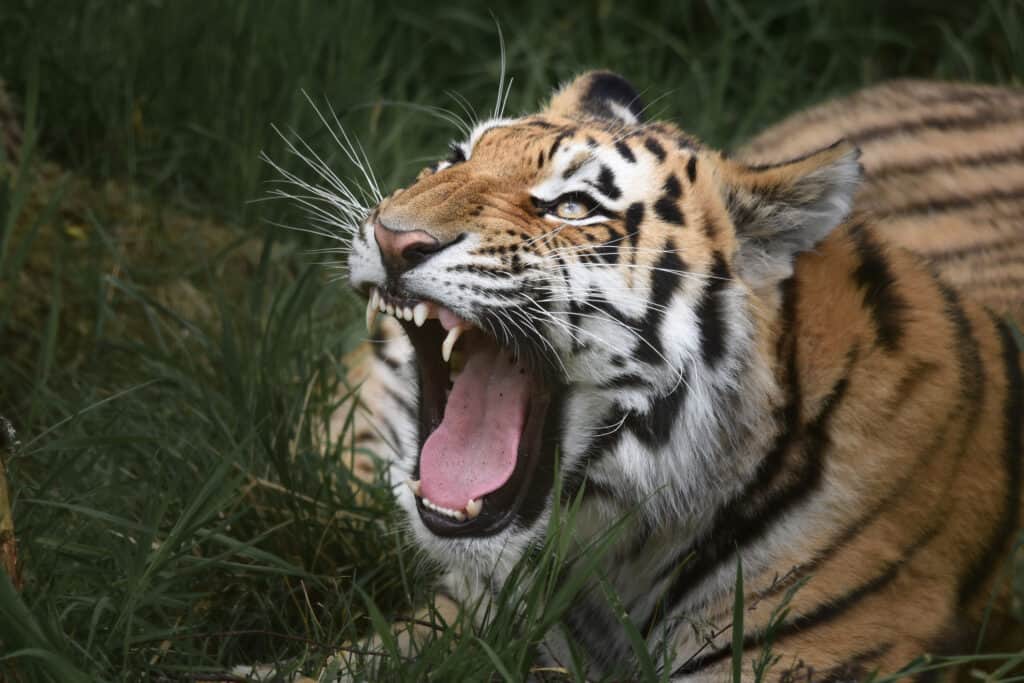
Tigers have attacked and killed more people than any other large cat.
©iStock.com/dito:Aleksejs Loginovs
Tigers have attacked and killed more people than any other large cat. In the early 20th century, one Bengal tigress killed 436 people. Tigers killed 129 people in Sundarbans between 1969 and 1971. Man-eating tigers rarely approach human populations to hunt. Many victims were in the tiger’s territory when it struck.
Unlike leopards and lions, tigers attack during the day. Cyclone Sidr in 2008 destroyed the habitat in the Sundarbans, causing tigers from Bangladesh to attack people. High salt levels in surrounding rivers may make tigers discontent with their nutrition and lifestyle, making them irritable and violent. Consuming human remains during floods and living closely with humans are other possibilities.
2. Lions
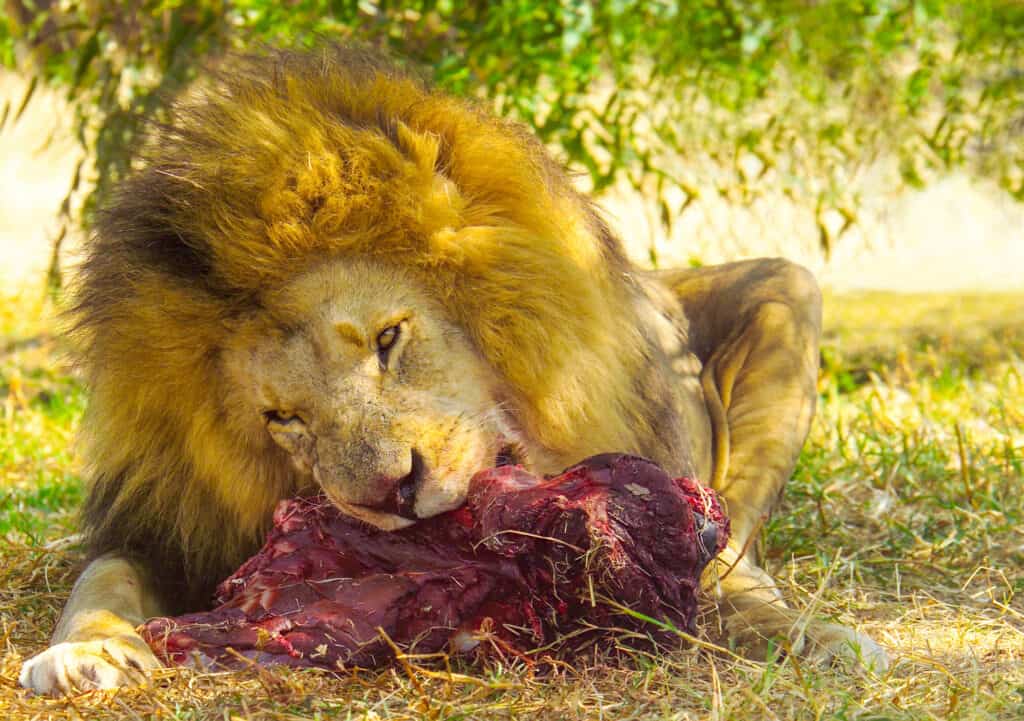
Lions with a propensity for cannibalism have been seen foraging in daylight hours in human settlements.
©iStock.com/diane39
Lions with a propensity for cannibalism have been seen foraging in daylight hours in human settlements. Ones that prey on humans are often quicker to kill than tigers since they are less afraid of humans. While some notorious killers were supposedly in peak physical condition, hunger, old age, and diseases are common triggers for cannibalism in both tigers and lions. The worst case of man-eating lions in recorded history occurred in 1898 in what was then British East Africa, or modern-day Kenya. Approximately 130 railroad employees, most of whom were brought in from India, were murdered or eaten by two gigantic male Tsavo lions in what is now Tsavo National Park. A rail bridge across the Tsavo River was being built at the time.
The then-prime minister of Britain sounded the alarm, bringing an immediate halt to the construction of the railway. Before the project’s head engineer could track them down and kill them, eight men had to carry each one to camp. Research on lions that have been known to kill humans has shown that this behavior is not a survival mechanism for wild African lions. A South African news website reported in July 2018 that three rhino poachers were attacked and eaten by lions in the Sibuya Game Reserve in the Eastern Cape Province of South Africa.
3. Leopards
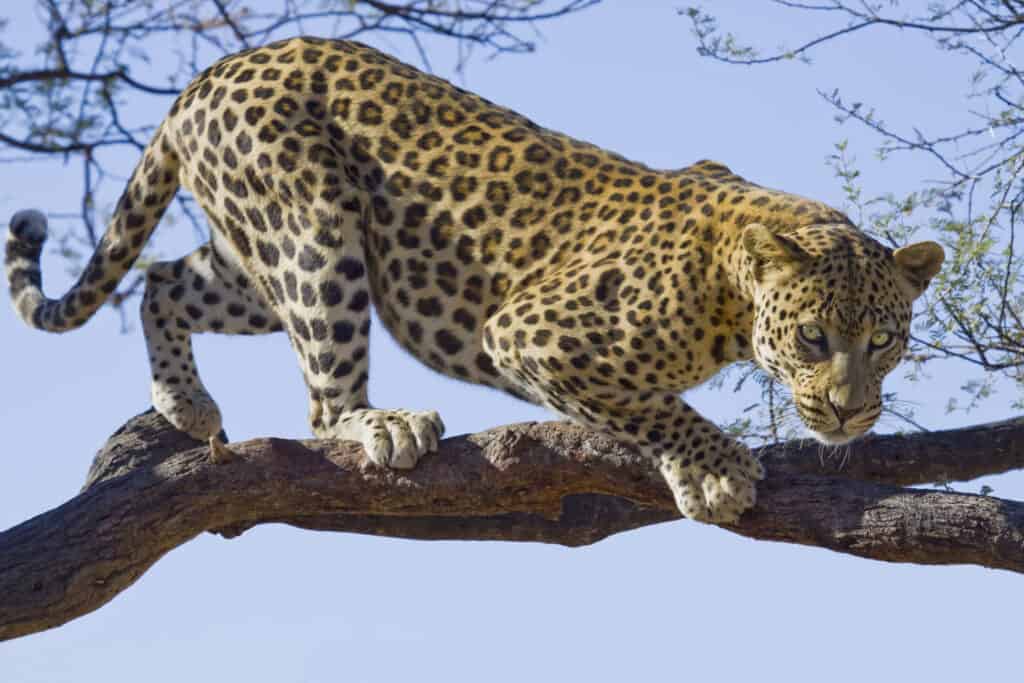
Leopards with a taste for human flesh are reported to strike at night.
©iStock.com/lightstock
In Asia, leopards with a taste for human flesh are reported to strike at night, crashing down doors and tented roofs in order to reach their victims. Although attacks during the day are less common, they have occurred on occasion in Africa. In 2019, a leopard in India kidnapped an infant and crushed its skull.
Although just a fraction of leopards are considered to be man-eaters, they have proven to be a major problem in certain regions; it is estimated that a single leopard in India has killed and eaten over 200 people. While tigers often turned into man-eaters due to disease, leopards were more inclined to do so after feeding on human corpses. This happens, for example, during major disease epidemics.
4. Wolves

Most victims of man-eating wolves are children.
©Alan Jeffery/Shutterstock.com
When compared to other carnivorous mammals, wolves are among the least dangerous due to their small size and low predation potential. The reason is, wolf attacks on humans for food are uncommon compared to those of other carnivorous creatures. Most victims of man-eating wolves are children.
Wolves that are habituated to human settlements lose their natural dread of humans and may start approaching too closely, much like urban coyotes. Some cases of man-eating wolves attacking humans have been linked to habituation. Wolves can become accustomed to humans, either accidentally if humans fail to terrify them enough, or on purpose if humans entice them to approach them with food. Evidence suggests that wolves in safe areas are more inclined to approach humans confidently than those in areas where they are often hunted.
5. Dingoes
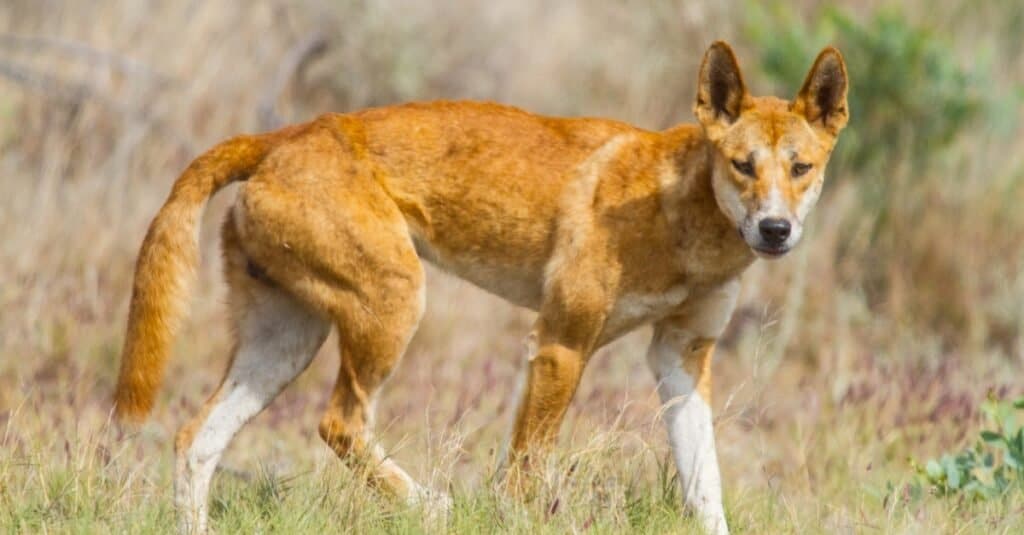
Dingoes are naturally suspicious of humans and try to keep their distance.
©iStock.com/indianoceanimagery
It is believed that only two dingo attacks on people have resulted in fatalities in Australia. Dingoes are naturally suspicious of humans and try to keep their distance. The most notorious case of a dingo attack is the 1980 vanishing of nine-week-old Azaria Chamberlain. Both of Azaria’s parents claimed to have seen a dingo drag Azaria from their tent while they were camped near Uluru. A father prevented a dingo from eating his 14-month-old child in Australia in 2019.
6. Polar Bears
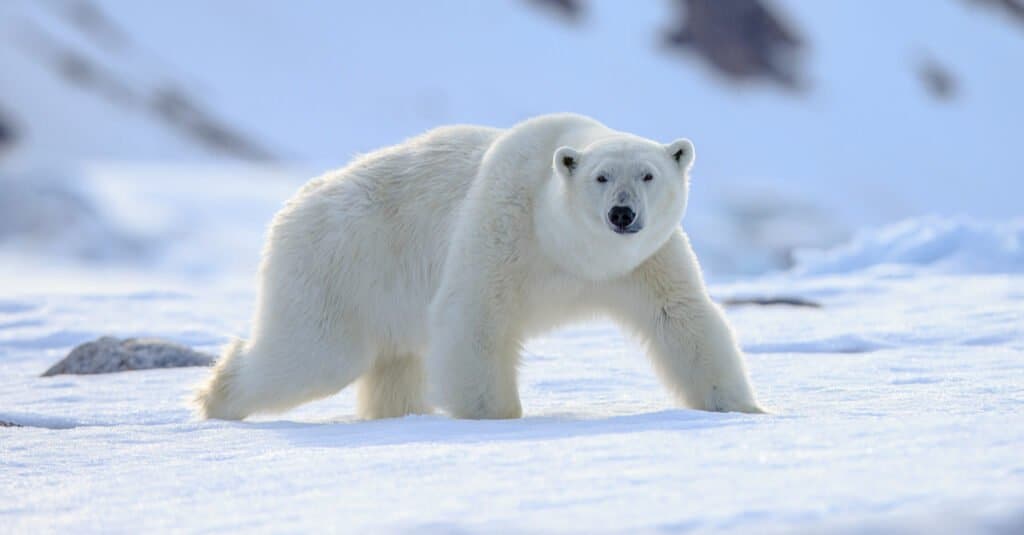
Polar bears rarely attack humans, but when they do, the results can be terrible.
©Vaclav Sebek/Shutterstock.com
Young and emaciated humans are more vulnerable to attack by polar bears because they are easy targets. Because of their massive size and strength, these gigantic land and seashore predators rarely attack humans, but when they do, the results can be terrible. Bears, like dogs, can be driven to fatal attacks for territory and to protect offspring. While attacks in which a bear eats a human being are extremely unusual, it is not unheard of for bears to attack and devour whatever they can kill if they are sick or starving.
7. Brown Bears
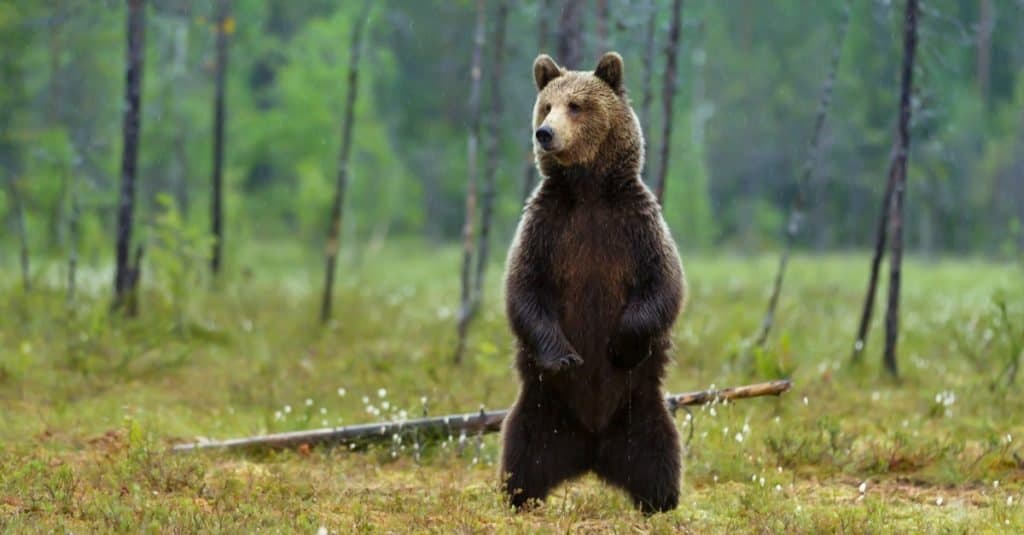
Brown bears will occasionally target campsites and hikers for food.
©Giedriius/Shutterstock.com
Brown bears in North America will occasionally target campsites and hikers for food. Lance Crosby, 63, from Billings, Montana, was attacked in August 2015 by a 259-pound grizzly bear as he was hiking alone in Yellowstone National Park without bear spray. Hikers in the park are required to hike in groups and have bear spray, a form of pepper spray designed to deter violent bears. His remains were found in the Lake Village area of the park in northwest Wyoming.
On October 5, 2003, Timothy Treadwell and his fiancée Amie Huguenard were attacked and killed by a 28-year-old brown bear. At a later time, it was found that the bear had been consuming human clothing and bones. In July 2008, two geologists were killed by a pack of starving brown bears in Kamchatka while working at a salmon hatchery. The authorities, upon discovering the half-digested corpses of the two workers, dispatched gunmen to shoot or scatter the bears.
8. American Black Bears

Black bear attacks on humans are extremely uncommon.
©BGSmith/Shutterstock.com
While black bear attacks on humans are extremely uncommon, a study conducted in 2011 indicated that the vast majority of fatal black bear attacks on humans in the United States and Canada are caused by solitary, predatory black bears. The male black bear views humans as a potential food source and will actively hunt them down, while the female bear will battle to protect her cubs.
9. Asian Black Bears and Sloth Bears
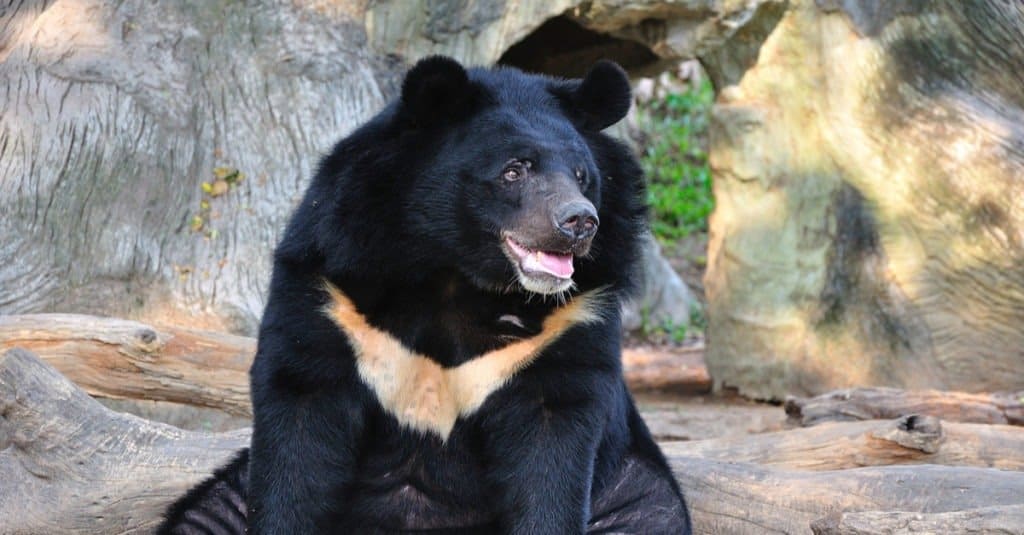
Black bears in Asia are more hostile toward humans than brown bears in Eurasia.
©Tigger11th/Shutterstock.com
Despite being generally cautious and wary creatures, black bears in Asia are more hostile toward humans than brown bears in Eurasia. Brown bears typically avoid people and will not attack if they see one. However, if they feel frightened or disturbed, they will likely attack. Some residents of India and Burma dread sloth bears more than tigers due to the latter’s predictability.
10. Hyenas

Striped hyenas are dangerous predators capable of killing an adult human.
©iStock.com/Meet Poddar
Spotted hyenas and striped hyenas are both dangerous predators capable of killing an adult human and have been known to attack humans when food supplies are low. Hyenas, like most predators, prefer to prey on vulnerable human populations, such as women and children, as well as on men who are sick, injured, or otherwise unable to defend themselves. It is the spotted hyena, not the striped hyena, which poses the greater threat due to its larger size, greater hunting prowess, and more aggressive demeanor. It is not common knowledge that aardwolves or brown hyenas prey on humans.
11. Crocodiles
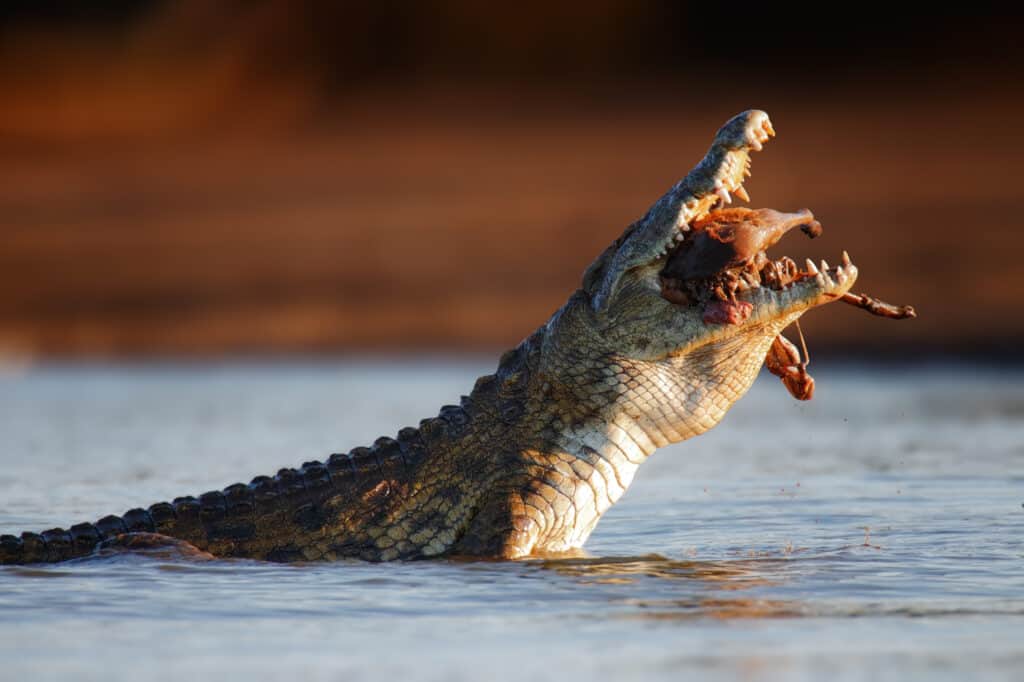
Several crocodiles have been blamed for human deaths in the tropical north of Australia.
©Mari Swanepoel/Shutterstock.com
In regions where crocodiles naturally occur, humans are a common target of assaults. There isn’t any other natural predator that preys on humans that have killed as many people as saltwater and Nile crocodiles. Every year, hundreds of people in sub-Saharan Africa are attacked and killed by Nile crocodiles. It is estimated that the Nile crocodile is guilty of more assaults on humans than all other species combined.
Several crocodiles have been blamed for human deaths in the tropical north of Australia. Although it doesn’t kill as many people as saltwater or Nile crocodiles, the mugger crocodile in Asia is nonetheless a major killer of humans every year. While every type of crocodile is dangerous to humans, most won’t actively seek them out.
12. Alligators

Most alligators attempt to avoid contact with humans.
©Thierry Eidenweil/Shutterstock.com
Despite their clear ability to kill food that is greater than humans in size, American alligators seldom feed on humans. However, there have been a few well-publicized incidents of alligators attacking humans, typically the reckless, young children, and the elderly. Most alligators attempt to avoid contact with humans, especially after being hunted, in contrast to the substantially more deadly saltwater and Nile crocodiles. It’s possible that not every event involved predation.
13. Pythons

There have been numerous reports of captive Burmese pythons killing humans via strangulation.
©Heiko Kiera/Shutterstock.com
Only a few snake species are physically capable of swallowing a full-grown human. In 2017, an adult was discovered within a seven-meter-long (23 ft) python in Indonesia. In 2018, a reticulated python slithered into Wa Tiba’s garden and swallowed a 54-year-old woman whole. There have also been numerous reports of captive Burmese pythons between three and four meters (9.8 and 13 feet) in length killing humans via strangulation. An inebriated adult was also killed by a Burmese python that measured only 2.7 meters (8.9 ft) in length. There have been several reports of attacks on children by the African rock python, the green anaconda, and the Burmese python.
Moreover, a quarter of the male Aeta population, a modern hunter-gatherer group residing in the forests of the Philippines, have reported escaping attacks from reticulated pythons. In 2002, a 10-year-old child in South Africa was killed after he was devoured whole by a six-meter long (20-foot long) African rock python. In Australia, there was one documented case of an adult scrub python attempting to consume a human. Such instances are witnessed and recorded experimentally, but unlike the situations discussed above, they have not been fully substantiated.
14. Piranhas
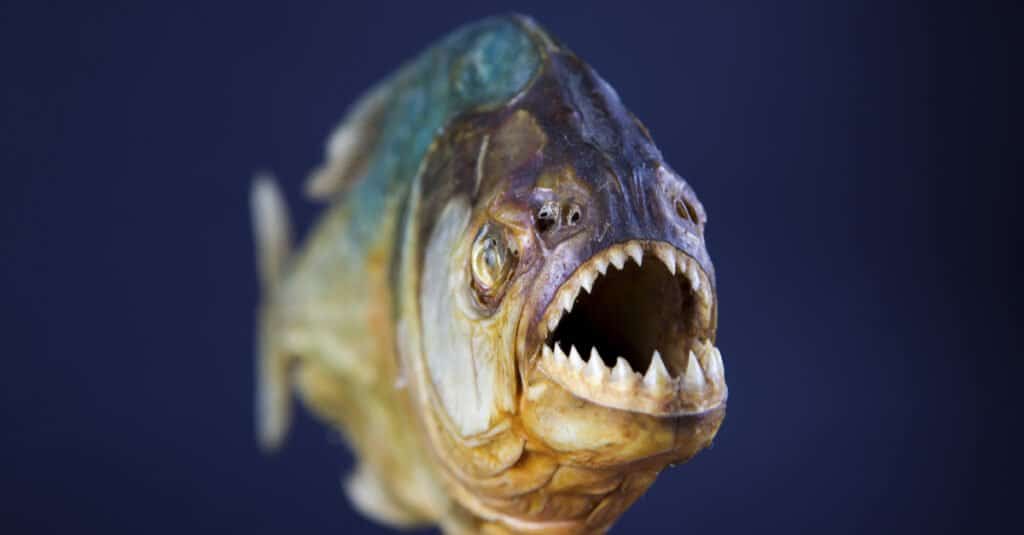
Human victims of piranha attacks have been found in the Amazon basin.
©simongee/Shutterstock.com
Human victims of piranha attacks have been found in the Amazon basin. An inebriated teen was attacked and killed in Bolivia in 2011. In 2012, a group of P. nattereri attacked a five-year-old Brazilian child and killed her. There are warnings posted on local rivers in Brazil, stating that piranhas can be found there.
15. Sharks
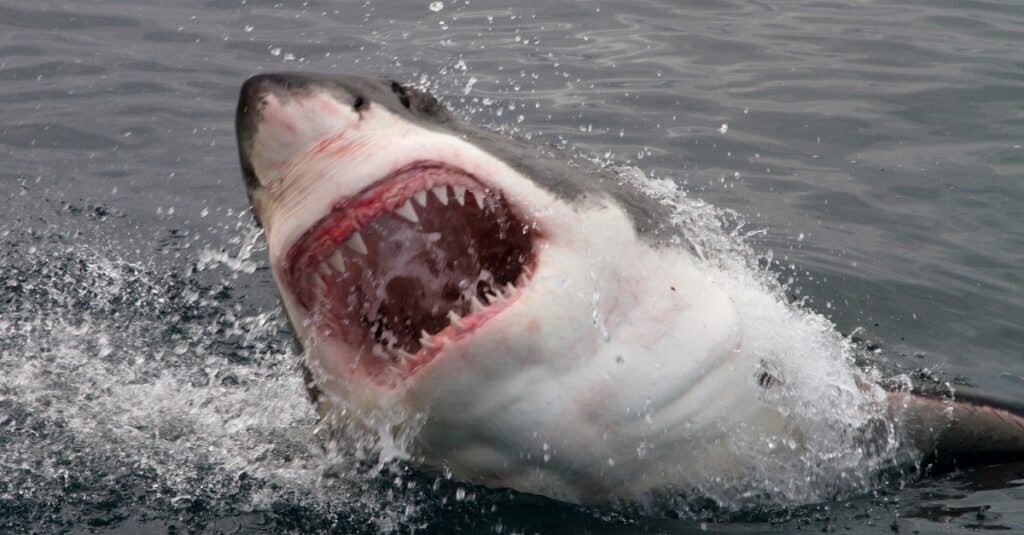
Only a limited number of shark species are considered to constitute true dangers to humans.
©iStock.com/Peter_Nile
While many people worry about sharks, only a limited number of shark species are considered to constitute true dangers to humans. Some of the more dangerous sharks may attack just out of curiosity, while others may mistake a person on a surfboard for their preferred seal prey and strike.
Only four of the more than 568 species of sharks have ever been confirmed to have killed humans without provocation: the great white, tiger, bull, and oceanic whitetip sharks. Even though these large, deadly predators sometimes attack and kill humans, it is crucial to highlight that all these sharks were caught on camera by exposed divers in open water.
The photo featured at the top of this post is © Mari Swanepoel/Shutterstock.com
Sources
- Britannica, Available here: https://www.britannica.com/story/6-real-life-man-eating-animals
- Science Focus, Available here: https://www.sciencefocus.com/nature/which-animal-is-most-likely-to-eat-people/
- RealClear Science, Available here: https://www.realclearscience.com/blog/2020/09/03/what_animals_are_most_likely_to_prey_upon_humans.html
Thank you for reading! Have some feedback for us? Contact the AZ Animals editorial team.






